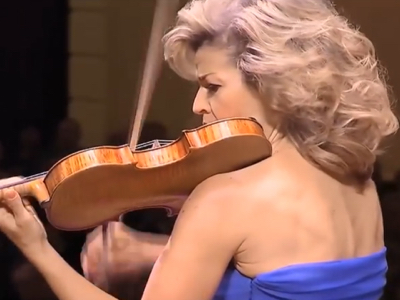Recently I listened again to this amazing masterpiece. It puts huge demands on the soloist. These demands are both for required technical skills, amd also for the ability to convey spirituality and deep feeling.
For me, a cold image of nature is a good to have in mind when listening to this music. The concerto was composed in 1904 and revised in 1905. The reason for revision is that the 1904 premiere was largely unsuccessful since the concerto proved technically too difficult. The 1905 version is considerably less challenging for both the solist and the orchestra.
The concerto starts with soft strings supporting a tranquil and simple solo violin melody. As the music continues, the violin grows more impassioned and suddenly drops from the highest to the lowest registers of the instrument. The violin part grows more and more virtuosic as the orchestra is given an increasingly active role. Later the solo violin begins an extensive and extremely virtuosic cadenza.
After the cold intensity of the first movement, the concerto’s second movement provides some degree of relaxation after a melancholic introduction in the winds. We now hear a warm, singing melody in the violin’s lowest register accompanied by horns and bassoons. The largely lyrical movement provides contrasts excellently with the brilliance and relentlessness of the outer two.
The third movement follows the adagio with relentless dance rhythms; The connection to dance is made clearer by Sibelius having reportedly described the movement as a “danse macabre” — a dance of death. The dance is combined with intense virtuosic elements in the violin. The violin’s parallel octaves coupled with heavy orchestration bring the dance to a close.
Here is a wonderful performance of this concerto by Anne-Sophie Mutter:

